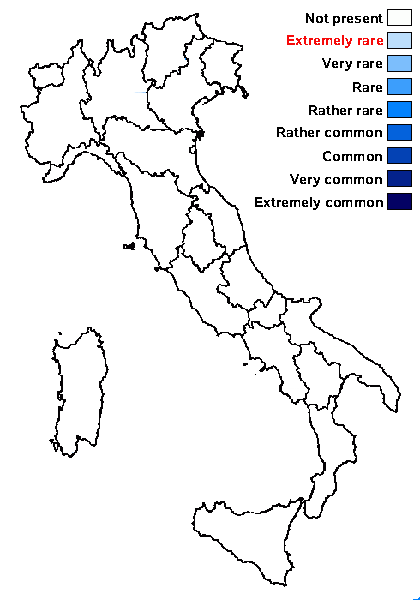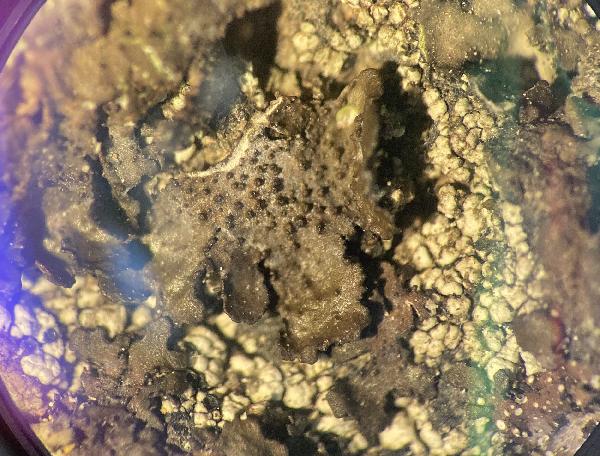Melanohalea infumata auct. medioeur. non (Nyl.) O. Blanco et al.
Synonyms:
Distribution:
Description: Thallus foliose, heteromerous, dorsiventral, forming 3-6 cm wide rosettes, isidiate. Lobes (2-)3-4(-6) mm wide, contiguous to imbricate, adpressed but sometimes slightly ascending at margins, dark brown to olive-brown, usually dull, but sometimes shiny at lobe tips, epruinose or partly finely grey-pruinose, with abundant, globose to finally cylindrical, simple to coralloid, 0.1-0.4 mm thick, not hollow isidia with rather indistinct apical pseudocyphellae. Lower surface pale brown, slightly darker at margin, with mostly simple rhizines. Upper cortex paraplectenchymatous, with a non-pored epicortex, the cell walls containing isolichenan; medulla very thin, white; lower cortex paraplectenchymatous. Apothecia very rare, lecanorine, with a brown disc and an isidiate thalline margin. Epithecium brown; hymenium and hypothecium colourless. Asci 8-spored, clavate, the K/I+ blue tholus penetrated by a faintly amyloid apical cushion with parallel or diverging flanks, the wall K/I-, surrounded by a K/I+ blue outer layer, Lecanora-type. Ascospores 1-celled, hyaline, ellipsoid, 8-12 x 4-7 µm. Pycnidia rare, black, laminal. Conidia slightly dumbbell-shaped, c. 7 x 1 µm. Photobiont chlorococcoid. Spot tests: cortex and medulla K-, C-, KC-, P-, N-, UV-. Chemistry: without lichen substances.Note: a much misunderstood lichen occurring on siliceous rocks in alpine-subalpine situations, which is worthy of further study. It was frequently confused with the true M. infumata, which is a strictly arctic-boreal species (see Esslinger 1977), with several records throughout the Alps (Nimis & al. 2018). I prefer to avoid synonymisation with the closely related, epiphytic M. elegantula chiefly because of the very different ecology and the fact that within the genus there seems to be quite a high hidden diversity, with several cryptic species described by e.g. Leavitt & al. (2016). To be looked for in the Italian Alps.
Growth form: Crustose
Substrata: rocks
Photobiont: green algae other than Trentepohlia
Reproductive strategy: mainly asexual, by isidia, or isidia-like structures (e.g. schizidia)
Poorly known taxon in need of further study

Predictive model
Growth form: Crustose
Substrata: rocks
Photobiont: green algae other than Trentepohlia
Reproductive strategy: mainly asexual, by isidia, or isidia-like structures (e.g. schizidia)
Poorly known taxon in need of further study

Predictive model


